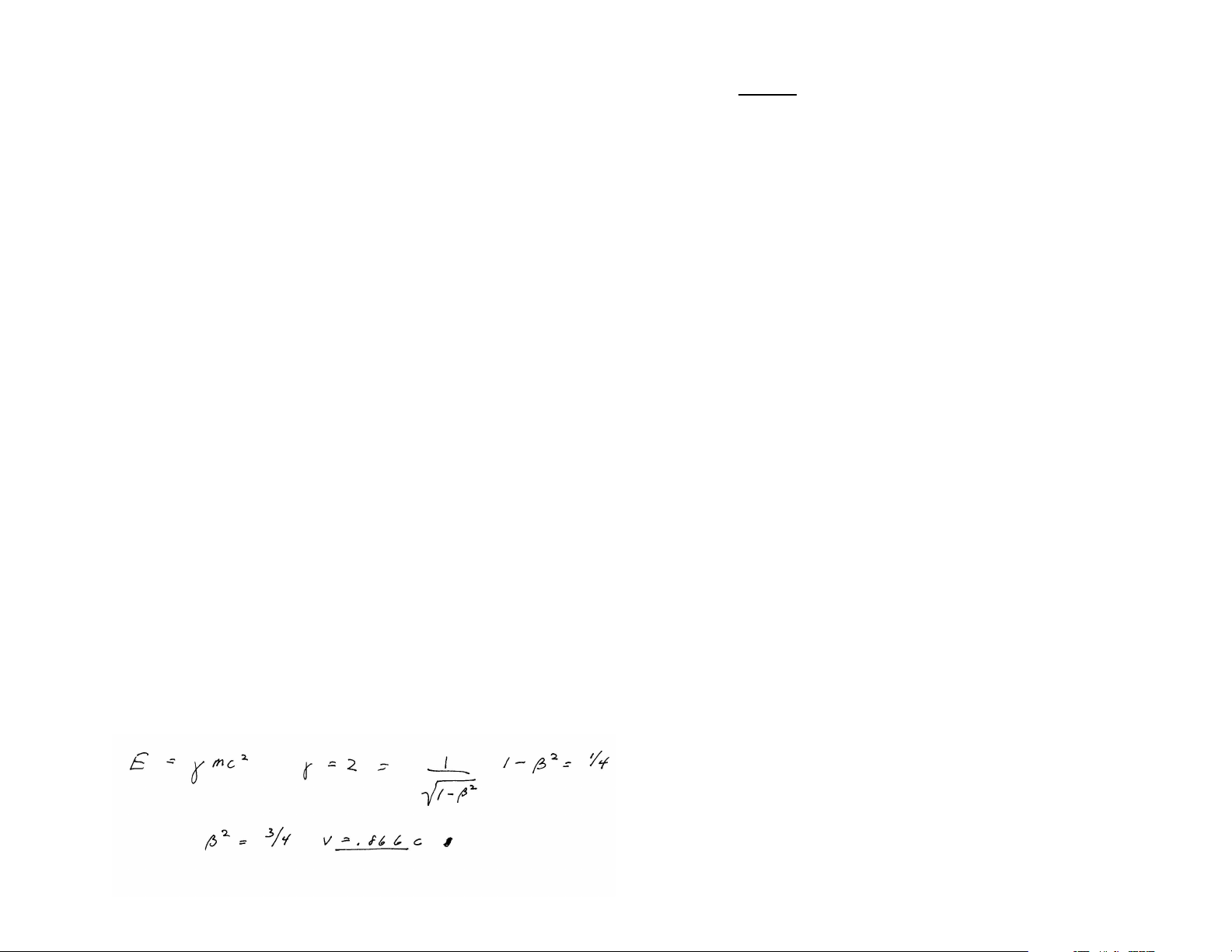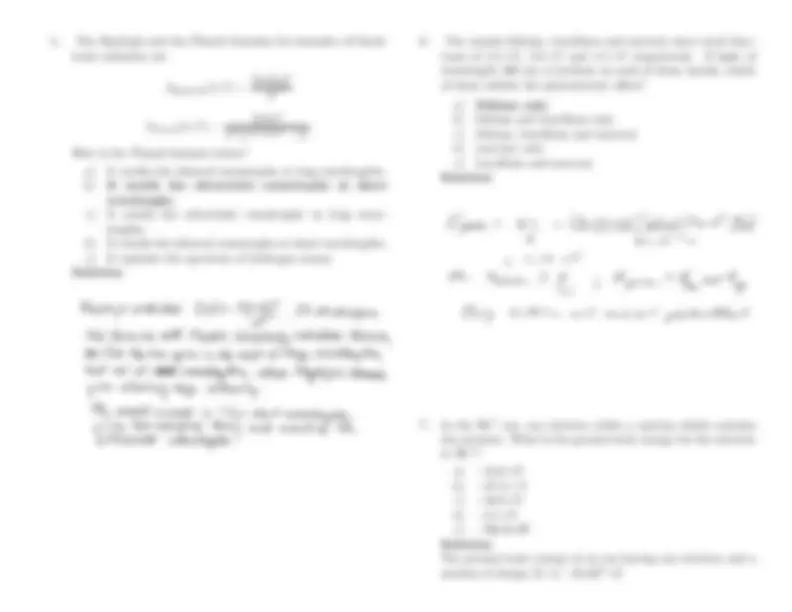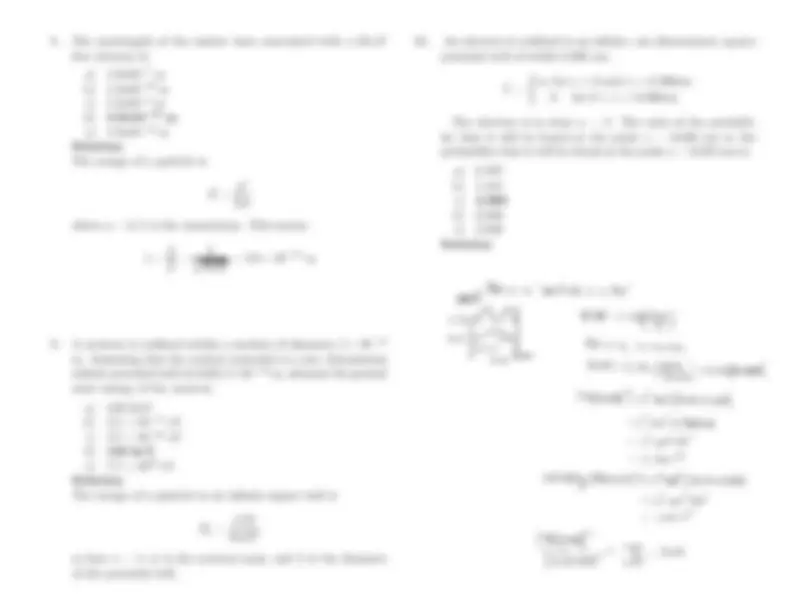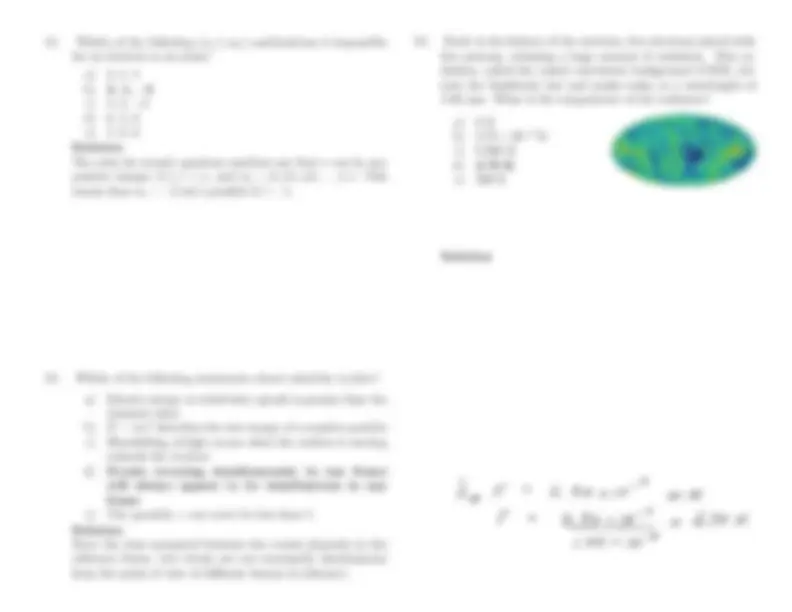





Study with the several resources on Docsity

Earn points by helping other students or get them with a premium plan


Prepare for your exams
Study with the several resources on Docsity

Earn points to download
Earn points by helping other students or get them with a premium plan
Community
Ask the community for help and clear up your study doubts
Discover the best universities in your country according to Docsity users
Free resources
Download our free guides on studying techniques, anxiety management strategies, and thesis advice from Docsity tutors
This is the Solved Past Paper of Optics and Modern Physics which includes Transparent Sphere of Index, Principle Points, Transform Matrix, Ray Incident, Total Internal Reflection, Index of Refraction etc. Key important points are: Speed of Particle, Speed of Reference Frame, Photoelectric Effect, Rayleigh-Jeans Law, Planck's Blackbody Radiation Formula, Free Electron, Temperature of Radiation, Schrodinger Equation
Typology: Exams
1 / 6

This page cannot be seen from the preview
Don't miss anything!




energy.Find the speed of a particle whose total energy is twice its rest
a)
0.925 c
b)
0.866 c
c)
0.500 c
d)
0.250 c
e)
0.792 c
Solution:
fect is FALSEWhich of the following statements about the photoelectric ef-
a)
sity above the cut off frequency.The photocurrent increases with increasing light inten-
b)
sity.The cut-off frequency is independent of photon inten-
c)
with decreasing photon wavelength.The maximum photoelectron kinetic energy increases
d)
creases with increasing light intensity.The maximum photoelectron kinetic energy in-
e)
frequency.The stopping potential increases with increasing photon
on the intensity of the light. The maximum photoelectron kinetic energy does NOT depend Solution:
the astronaut aged during his trip?constant speed of 0.80 c relative to the earth. How much hasto the earth. His outbound and return trip are all at the sameaway (as seen by an observer on the earth). Then he returnsAn astronaut travels from the earth to a star 4.8 light years
(Assume that times for
all negligible.)acceleration, deceleration and his stay at the distant star are
a)
16 years
b)
12 years
c)
9.6 years
d)
7.2 years
e)
5.8 years
star contracted: The astronaut will see the distance between the earth and the Solution:
d astro
d Earth
√
1 −
( u/c
2
returns). The distance he travels is twice this (since he goes out and
So the amount the astronaut ages is the time he
spends traveling in his own reference frame, which is
d u astro
8 ly
c
√
1 −
(
.
2 = 7
2 years
(Note: since 1 light-year is
c (^) ∗ (^) 1 year, we don’t have to do any
conversions!)
An observer measures a time interval of 0.
μ s between two
space?ence frame in which the two events occur at the same point inevents that occur 100 m apart. What is the speed of a refer-
a)
b)
0.25c
c)
0.56c
d)
1.1c
e)
1.8c
single object moving at the speedThe naive way says that if the two events are caused by athe sophisticated way, and they both give the same answer. There are two ways to think about this one: the naive way and Solution:
u , then the speed is
u
=
D/t
0 100 m . 6
μs
c
is to perform a Lorentz transformation:same direction at the same speed. The sophisticated method You can make them appear at the same point by moving in the
′ = 0 =
(^) ut
√
1 (^) −
u/c
2
The
γ
factor doesn’t change anything: we can divide it out,
which leaves us with
(^) ut
= 0, which yields the same answer
that the naive approach gives!
free electron is:The wavelength of the matter wave associated with a 10-eV
a)
1.9x
− 7 m
b)
1.3x
− 34
m
c)
1.2x
− 9 m
d)
3.9x
− 10
m
e)
1.9x
− 10
m
The energy of a particle is Solution:
p 2
m
where
h/λ
is the momentum. This means
λ
=
p h
=
h
mE
− 10
m
A neutron is confined within a nucleus of diameter 4
− 14
infinite potential well of width 4 m. Assuming that the nuclear potential is a one- dimensional
− 14
m, estimate the ground
state energy of the neutron.
a)
130 MeV
b)
− 14
eV
c)
− 44
eV
d)
130 keV
e)
23
eV
The energy of a particle in an infinite square well is Solution:
n 2 h 2
mL
2
so here
n
= 1,
m
is the neutron mass, and
is the diameter
of the potential well.
An electron is confined in an infinite, one dimensional, square potential well of width 0.200 nm.
{ ∞^
for
x <
0 and
x >
200nm
for 0
< x <
200nm
The electron is in state n = 2.
The ratio of the probabil-
ity that it will be found at the point
x
= 0
050 nm to the
probability that it will be found at the point
x
= 0
025 nm is:
a)
b)
c)
d)
e)
Solution:
Which of the following (
n, `, m
` ) combinations is impossible
for an electron in an atom?
a)
b)
c)
d)
e)
The rules for atomic quantum numbers say that Solution:
n
can be any
positive integer, 0
` < n
, and
m
` = 0
. This
means that
m
− 2 isn’t possible if
Which of the following statements about relativity is
false
a)
classical valueKinetic energy at relativistic speeds is greater than the
b)
mc
2 describes the rest energy of a massive particle
c)
towards the receiverBlueshifting of light occurs when the emitter is moving
d)
Events
occuring
simultaneously
in
one
frame
framewill always appear to be simultaneous in any
e)
The quantity
γ
can never be less than 1.
from the point of view of different frames of reference.reference frame, two events are not necessarily simultaneous Since the time measured between two events depends on the Solution:
Early in the history of the universe, free electrons joined with free protons, releasing a huge amount of radiation.
This ra-
1.06 mm. What is the temperature of the radiation?lows the blackbody law and peaks today at a wavelength ofdiation, called the cosmic microwave background (CMB), fol-
a)
b)
− 3 K
c)
d)
e)
Solution: